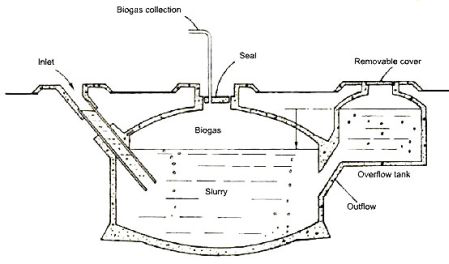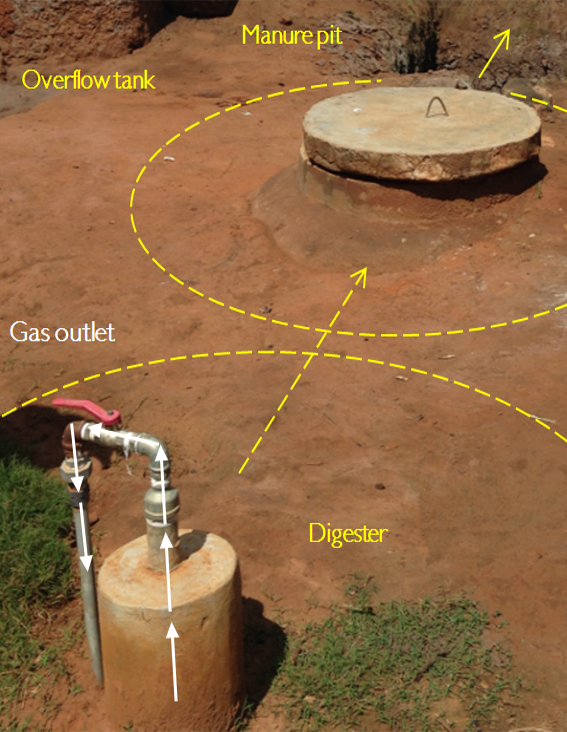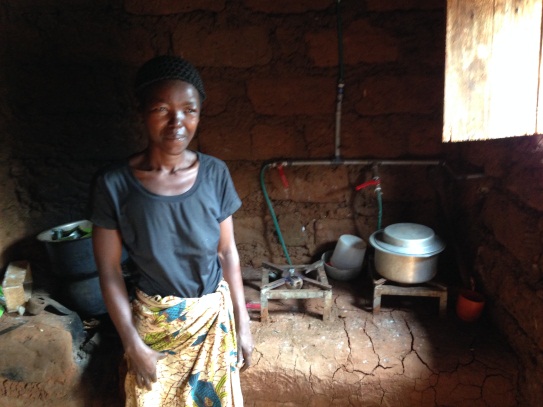World Vision Rwanda works with the Energy, Water and Sanitation Authority of Rwanda (EWSA) to support Rwandan farmers in establishing manure-based biogas cooking systems, which provide clean energy for domestic cooking appliances. EWSA installed the biogas systems, and both EWSA and World Vision Australia provided families with subsidies to jump-start the project. Over 100 households have adopted the biogas systems. Key benefits of biogas systems How do biogas systems work? The biogas system installed by EWSA consists of two buried masonry tanks: a digester tank and an outlet tank. Manure slurry is fed through an inlet into the larger tank, the digester, where micro-organisms reduce complex organic matter into methane gas and other organic compounds. Diagram of a biogas system The build-up of methane gas creates pressure, channelling the gas into a pipe leading to the cookstove. A valve located overground allows for control of gas flow to the kitchen. Gas pressure in the digester also flushes the system of spent manure, pushing it through a canal from the outlet tank to an overground pit. Illustration of a biogas system in Rwanda
Double burner biogas on the right, supplemental wood stove on the left Consumption results Five households were selected visited and interviewed to assess the impact of the biogas systems. All families interviewed used biogas as the principle energy source to cook three meals a day. The biogas generated from the manure of two cows was generally enough to supply all the cooking fuel needed by an average family. However, large families with over five children continued to use wood stoves for foods such as beans, which require long cooking times. Families reported positively on their experiences with the biogas systems, citing the following benefits: Families reported a decline in biogas production in the dry season, when they struggle to cut enough forage for cattle. Landholdings are small so famers grow forage which is mostly elephant grass. Reduced growth in the dry season means less forage for cows and less manure for biogas Economic results Because biogas systems supplant wood-based cooking systems and involve minimal running expenses, benefits can be calculated almost exclusively against firewood savings. The cost of a traditional masonry biogas system is US$984. For families that purchase all their firewood this investment would take 5 years to repay through firewood savings over 3 stone cooking systems. For farmers who receive subsidies, the break even point is just 11 months. New biogas systems with plastic tanks appear to be even more cost-effective and efficient. They generate a similar amount of energy as the concrete systems using the manure of only one cow, making them appropriate for a larger number of families. The cost of one new biogas plastic system is US$735, which can be recovered in 3 and a half years without subsidies and in 6 months with subsidies.

Source: Kangmin and Ho (2006)



© 2013 World Vision